Q&A – Ask Neil: January 16, 2025
(Please read these instructions carefully.)
Before you post your question, please look at recent issues to see if someone else has already asked it. You might find your answer there.
How to submit your question…
(Note: You may need to allow a pop-up window to come up in order to get the link for sending your photo(s). If you have already submitted your question and didn’t see the pop-up window, please click here.)
• Click the link provided below to post your question. After you submit your question, a new window will pop up giving you the address to which you can e-mail a SHARP, HIGH-RESOLUTION PHOTO to accompany your question. Please DO NOT SEND THUMBNAIL PHOTOS in case I need to zoom in to see things.
• Click here to post your question.
• Please ONLY POST YOUR QUESTION ONE TIME. We can only accept a set number of questions each week, and when we get duplicates it costs other people their chances.
• One question per reader, please.
• Please use this only for posting questions – not for standard emails.
• Watch for your answer in the following week’s e-gardens.
• I choose those of greatest general interest. For example, plant IDs seldom make the cut.
• I must have your first name or initials.
• I must have your city or county. (Texas is a very large state.)
QUESTION 1
SHOULD I REMOVE THESE BOXWOODS OR GIVE THEM A “HARD PRUNE?”
Question: I inherited this long-term result of formal shearing, and now I’m wondering if it’s time to remove these boxwoods or give them a “hard prune?” Loren O., Sulphur Springs.
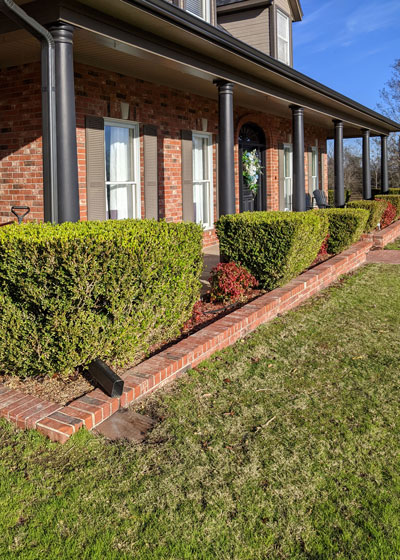
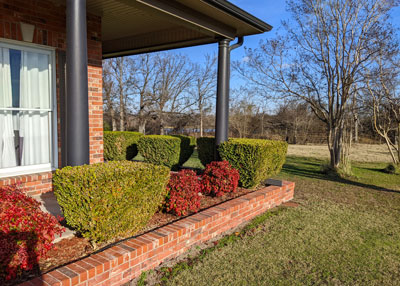
Answer: So much of my answer depends on my own personal taste. I’m not a fan of artificially formal shapes like this. If they were softly rounded, more like a boxwood would normally grow, they would “feel” more comfortable to my eyes.
If I moved into your house, I would definitely use hedge trimmers to round them back considerably next month before they started growing. I’d apply an all-nitrogen fertilizer to stimulate new growth. And I would try to train them more in the form of softened globes or ovals.
However, there is a risk. You may find that some of the internal plants are very weak after being smashed together for many years.
Plan B might be just to round off the sharp angles and try to lessen the drama.
If all else fails, you do have that option of starting new plants entirely.
QUESTION 2
WHAT CAN I DO WITH SOIL IN TUBS WHERE I TREATED FOR FIRE ANTS?
Question: I use large black syrup tubs for my garden. Fire ants took over one of the tubs. I treated and “killed” the bed. I’m sure they will be back when it warms up. Should I leave it empty or start over with new soil? What ideas do you have? Shirley G., Granbury.
Answer: Check the label of the product you used and, if necessary, contact the manufacturer to discuss it with them. Every insecticide must, by law, have a phone number on its container. I would think that the insecticide would have dissipated in all that time, especially if it was labeled for use in vegetable gardens in the first place. I wish I could be more precise, but without knowing the product’s name, when you applied it, and what crops you’ll be planting, there are far too many variables. I prefer not to take on that kind of liability. (Starting this season with fresh soil entirely should bypass the concerns.)
QUESTION 3
WHERE CAN I FIND THE SCARLET’S PEAK YAUPON HOLLY YOU MENTIONED?
Question: I’ve been searching for a columnar yaupon holly for a few years now, specifically the Scarlet’s Peak you described in last week’s e-gardens. I haven’t seen it in any stores. Any tips on where I can source them? Tara B., Abilene.
Answer: That was Steve Huddleston’s story, and when it came in, I figured we’d probably have a couple of inquiries as to where these new introductions might be found. As we mentioned in the story, my best suggestion would be to check now with your favorite local independent retail garden centers to ask if they either have or will have them, or if they can order them in for you. Nurseries that also sell to landscape contractors generally do special orders and are used to tracking down unusual plants like this. Scarlet’s Peak has been around for 10 years or longer, so it should be out there in the market. I do see it listed by The Tree Place in Fort Worth on their website.
QUESTION 4
CAN I LEAVE FREEZE CLOTH ON MY LIGUSTRUMS THE DURATION OF THE WINTER?
Question: I put freeze protection cloth on our ligustrums last week. Is it safe to leave it on the shrubs the balance of the winter? Tom B., Fort Worth.
Answer: If it is a type that allows passage of air and moisture through, then yes. It sounds like that is probably the case. I leave mine over the tops of my aspidistras and holly ferns for as long as 8 or 9 weeks. In any event, I would certainly leave things covered through mid-week next week. It sounds like North Texas is going to get Round 2 of cold over the weekend.
QUESTION 5
WHAT WILL DETER RABBITS FROM EATING MY PANSIES?
Question: Is there anything that will deter rabbits from eating my pansies? I tried one of the baits and they seemed to love it, a spice mixture (too expensive), and solar-powered flashers (not enough sun). I am so frustrated. Cynthia F., Plano.
Answer: This is a common issue in urban areas where HOAs have leash laws and landscaping ordinances requiring good maintenance. People try to keep things looking really nice. Without dogs roaming the neighborhoods, rabbits run freely. They’re cute initially, but then we realize how damaging they are to our pansies and other ornamental plants. I finally went to large patio pots – too tall for the rabbits to reach. I planted my color annuals up in those pots, and it has worked well for many years. The technique has also been great in the summer against armadillos. I use the best possible potting soil, and having my plants in containers allows me to wheel them into protection on the coldest of nights or, later into the spring, if hail is expected.
QUESTION 6
HOW WELL WILL PAWPAW TREES DO IN DECATUR?
Question: I recently purchased 25 pawpaw saplings and planted them throughout our small 20-acre farm in groups of 3 and 4. How well are they likely to do? Jeff H., Wise County.
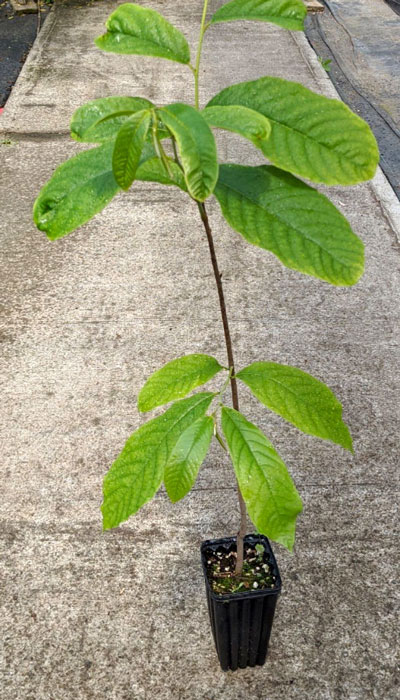
Answer: Pawpaws are native to, and best adapted to, deep East Texas and across the Gulf South. Wise County surprises me every once in a while. I know you have some sandy loam soils that are moderately acidic. In those areas your pawpaws might have a chance, although high summer temperatures and low humidities won’t be to their liking. Good luck with them. Always feel free to ask me things like this before you make your purchases. I’ll do all that I can to help you.
QUESTION 7
SHOULD MY WEEPING YAUPON BE CUT BACK TO “GOOD WOOD?”
Question: I was excited to see the story on yaupon hollies last week. We have a weeping yaupon. The top 2 ft. of its branches have no leaves or berries. Should we trim them back to “good wood?” Louise S., Decatur.
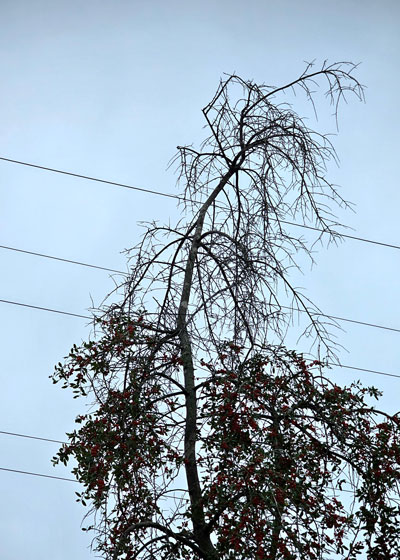
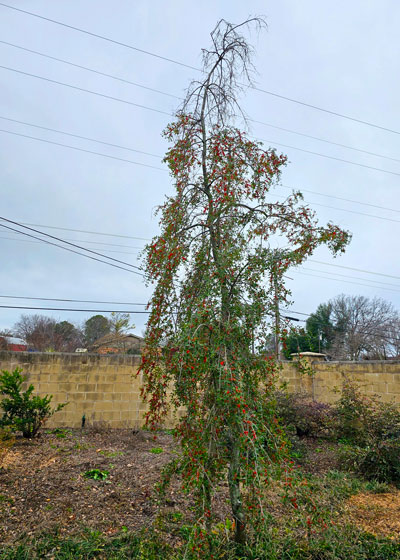
Answer: Yes. It probably got too dry one of the past two late summers. Do a little reshaping as you remove the dead wood. Fertilize it with an all-nitrogen food. Soak its soil thoroughly and it should take off this spring. The more moisture you can give it, the faster the plant will grow.
